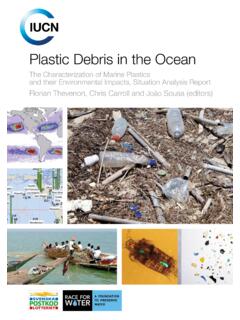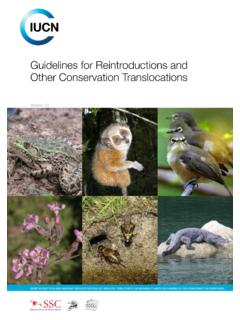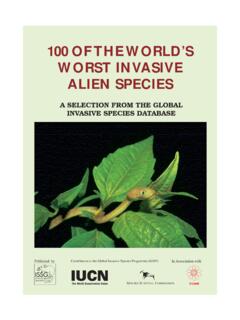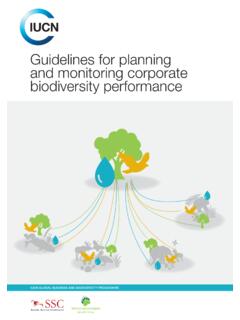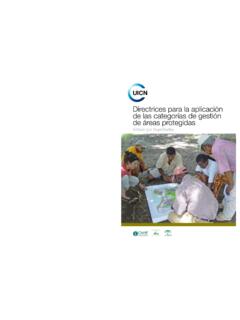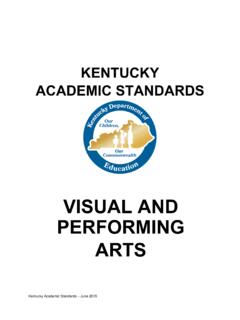Transcription of Primary Microplastics in the Oceans
1 InternatIonal UnIon for ConservatIon of natUrea Global Evaluation of SourcesAuthors: Julien Boucher, Damien FriotPrimary Microplastics in the Oceans : Primary Microplastics in the Oceans :a Global Evaluation of SourcesAuthors: Julien Boucher, Damien FriotThe designation of geographical entities in this book, and the presentation of the material, do not imply the expression of any opinion whatsoever on the part of IUCN concerning the legal status of any country, territory, or area, or of its authorities, or concerning the delimitation of its frontiers or views expressed in this publication do not necessarily reflect those of by: IUCN, Gland, SwitzerlandCopyright.
2 2017 International Union for Conservation of Nature and Natural Resources Reproduction of this publication for educational or other non-commercial purposes is authorised without prior written permission from the copyright holder provided the source is fully acknowledged. Reproduction of this publication for resale or other commercial purposes is prohibited without prior written permission of the copyright : Boucher, J. and Friot D. (2017). Primary Microplastics in the Oceans : A Global Evaluation of Sources. Gland, Switzerland: IUCN. : 978-2-8317-1827-9 DOI: : Julien Boucher EA Shaping Environmental Action & University of Applied Sciences and Arts Western Switzerland // HES-SO, HEIG-VD, Yverdon-les-Bains, Switzerland Damien Friot EA Shaping Environmental Action Carl Gustaf Lundin and Jo o Matos de SousaExternal reviewers: Francis Vorhies (Earthmind, ) Fran ois Galgani (IFREMER, Laboratoire LER/PAC) Mathieu Pernice (University of Technology, Sydney) Doug Woodring ( ) Designed by: Imre Sebesty n jr.
3 (Unit Graphics Studio)Available from: Microplastics In the Oceans : A GlobAl EvAluAtion of SourcESTable of conTenTsForeword 4 1. Abstract 52. Introduction 72 1 Plastics & Microplastics contaminate the world ocean 82 2 Knowledge gaps about Microplastics releases 82 3 Rapidly increasing use of plastics 92 4 Objective of this report
4 103. Description of issues & methodology 113 1 Literature review of key sources 123 2 A lifecycle perspective of losses 133 3 Description of seven key sources 143 4 Modelling activities.
5 Losses & releases 173 5 Three scenarios for presenting the results 184. Results & Analysis 194 1 Primary Microplastics are a significant source of plastic in the Oceans 204 2 Two-thirds of the releases are from the erosion of synthetic textiles & tyres 214 3 Household activities generate almost three quarters of the releases during the use phase and maintenance of plastic products 234 4 Two-thirds
6 Of the losses are through road runoffs 244 5 All regions contribute significantly to releases 254 6 Releases average one plastic bag per person per week 264 7 Key sources of releases differ among regions 274 8 Microplastic releases are high in Europe & North America 284 9 Closing the plastic tap requires different sets of solutions 295.
7 Conclusion 305 1 Take home messages 315 2 Shaping action to close the plastic tap 315 3 Next steps 326.
8 Appendix 1: Sources 336 1 Synthetic textiles: abrasion during laundry 346 2 Tyres: abrasion while driving 346 3 City dust: spills, weathering & abrasion 356 4 Road markings: weathering and abrasion by vehicles 366 5 Marine coatings: weathering, application & maintenance 366 6 Personal care products: loss during use 376 7 Plastic Pellets: manufacturing, transport & recycling 377.
9 Appendix 2: Pathways 387 1 Road runoff pathway 397 2 Wastewater Pathway 397 3 Wind pathway 397 4 Ocean
10 Pathway 398. Appendix 3: Regions 40 9. Bibliography 424 Primary Microplastics In the Oceans : A GlobAl EvAluAtion of SourcESforewordThe invention of plastic based on a synthetic polymer in 1907 changed our lives forever for better and for worse.


